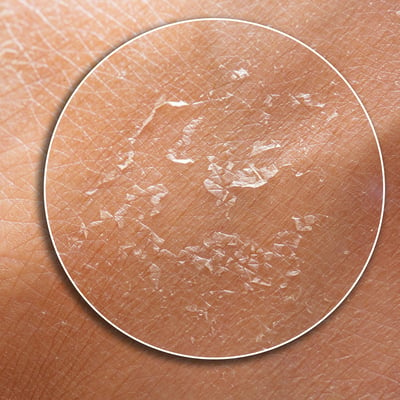
For many people living with hidradenitis suppurativa (HS), the journey to relief can feel long and uncertain. The condition is marked by recurrent, painful nodules and abscesses that can profoundly affect quality of life. Too often, patients endure years of discomfort and repeated misdiagnoses and are left physically distressed and emotionally exhausted before finding answers or effective treatment.
The good news is that the spotlight is growing brighter on new ways to diagnose and treat HS. In recent months, several dermatology conferences and publications have highlighted encouraging developments, from therapies and biologic medications to evolving surgical techniques, that offer renewed hope for hidradenitis suppurativa patients.
Understanding the burden of HS
Hidradenitis suppurativa affects an estimated 1% of the population, yet it often remains undiagnosed for years. Studies suggest that the average diagnostic delay can be seven years or more, during which patients may see multiple healthcare providers before reaching a dermatologist familiar with the disease.
This delay matters. HS is a complex, progressive disease. Mild flare-ups can evolve into chronic, scarring lesions that restrict movement and can cause pain, infection, and unpleasant odors. The emotional toll is equally significant: Patients frequently report depression, anxiety, social isolation, or more severe disorders as they navigate the daily discomfort and stigma of this condition.
Effective treatment for hidradenitis suppurativa requires addressing not only the disease itself but also the years of emotional distress and frustration that often precede diagnosis. Because they understand each patient’s journey and past treatment experiences, dermatologists can design care plans that are realistic, multidisciplinary, and grounded in the latest science.
Where traditional hidradenitis suppurativa treatment falls short
For many years, HS treatment focused primarily on managing symptoms rather than altering the disease course. Traditional therapies such as topical and oral antibiotics, corticosteroid injections, hormonal agents, and antiseptic washes offered temporary relief but often did not provide lasting control. Surgical excision was typically reserved for advanced cases or acute relief in the emergency room, and patients frequently cycled through rounds of antibiotics with limited benefit.
Today, however, dermatologists are rethinking this approach. Cutting-edge strategies that integrate metabolic therapies, targeted biologic agents, and refined surgical techniques are producing better outcomes and improving quality of life. Just as important, clinicians must recognize and address the profound emotional and psychological burden that often accompanies HS. By treating HS as both a systemic inflammatory and psychosocial condition rather than a purely cutaneous one, providers working in a team approach are helping patients achieve not only better physical results but a renewed sense of confidence and well-being.
Reframing HS as a systemic, metabolic condition
One of the most important shifts in recent years is the recognition that hidradenitis suppurativa is not simply a skin disease: It is a systemic inflammatory disorder with strong links to metabolic and hormonal health. Obesity, insulin resistance, and polycystic ovary syndrome (PCOS) are among the conditions often seen alongside HS.
This has opened the door to innovative therapies targeting the underlying inflammation and metabolic dysregulation that may drive the disease. Chief among them are GLP-1 receptor agonists, such as semaglutide and tirzepatide. These medications, originally developed for diabetes and weight loss, are showing promise in improving HS outcomes with more than half of treated patients reporting significant improvement.
Preliminary research and clinical experience suggest that using GLP-1 for hidradenitis suppurativa may reduce flare frequency, severity, and inflammation by influencing pathways common to both metabolic disease and HS. For some patients, the weight reduction that accompanies treatment may further ease mechanical friction and decrease recurrence.
At Forefront, our physicians collaborate with endocrinologists and primary care providers to evaluate whether GLP-1 therapy could complement traditional HS treatment.
Precision medicine through HS biologics
Another area of rapid advancement is biologics, which are medications made from living cells. HS treatment includes targeted therapies that address specific immune pathways to reduce the inflammation caused by the condition.
For years, adalimumab (Humira), a TNF-alpha inhibitor, was considered the go-to biologic for treating hidradenitis suppurativa. While it remains an important first-line option for many patients, newer biologics are emerging that act on different cytokine pathways, including interleukin-17 (IL-17) and interleukin-1 (IL-1).
Agents targeting IL-17, for example, have demonstrated impressive reductions in abscess and inflammatory nodule counts in clinical trials. These therapies may be particularly beneficial for patients who have not responded to adalimumab or who experience undesirable side effects.
Forefront dermatologists can integrate biologics into treatment plans based on disease severity, patient history, and individual goals. The result is a personalized, data-driven approach that optimizes both safety and efficacy.
Surgical advances: earlier, targeted intervention
Historically, surgery has been considered a last resort treatment for HS: Something to pursue only after medical management failed. However, recent research is challenging that notion.
Studies now show that early surgical intervention, particularly through procedures such as deroofing, can significantly improve patient outcomes. Also called unroofing, deroofing involves removing the lesions and tunnels caused by HS beneath the patient’s skin. This is done by inserting a probe into the tunnel, cutting the top of it, and removing the entire tunnel, along with the “roof” of skin above it, while preserving surrounding healthy tissue. The result is faster healing, less recurrence, and reduced discomfort compared to wide excision techniques used in the past.
Importantly, surgery is not viewed in isolation. It is integrated into a broader treatment plan that includes medical therapy and long-term management to prevent recurrence. For many patients, this comprehensive approach breaks the cycle of pain and infection that has defined their experience with HS.
Forefront surgeons are trained in advanced deroofing and excision techniques tailored to the patient’s disease stage and anatomic location. These procedures are often performed under local anesthesia, allowing for same-day recovery with minimal downtime.
Addressing the physical and emotional scars of HS
While medical innovation is essential, true progress in hidradenitis suppurativa care requires equal attention to the human experience. The psychological burden of HS can be immense, and stigma around the condition often leads to withdrawal from work, relationships, and daily activities.
At Forefront, our clinicians view emotional well-being as an inseparable part of treatment success. We take time to educate patients about the nature of HS, emphasizing that it is not caused by poor hygiene or lifestyle choices, but by a complex interplay of genetic, hormonal, and immune factors that can take time to resolve.
Through compassionate education and coordinated care among dermatologists, surgeons, and other specialists, we help patients stay supported and confident throughout their treatment journey.
Looking forward
The growing body of research into hidradenitis suppurativa is transforming both how we understand the disease and how we treat it. As metabolic therapies, biologics, and minimally invasive surgeries become more refined, the future looks increasingly hopeful for patients who have long struggled to find relief.
We are proud to be part of that progress. Our team remains deeply engaged in continuing education, clinical research, and collaboration with colleagues across specialties—all while maintaining a singular focus on compassionate, patient-centered care.
To learn more about HS treatment options, find a Forefront location near you today.





